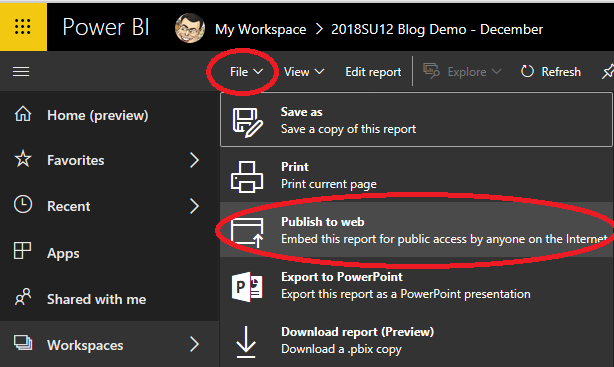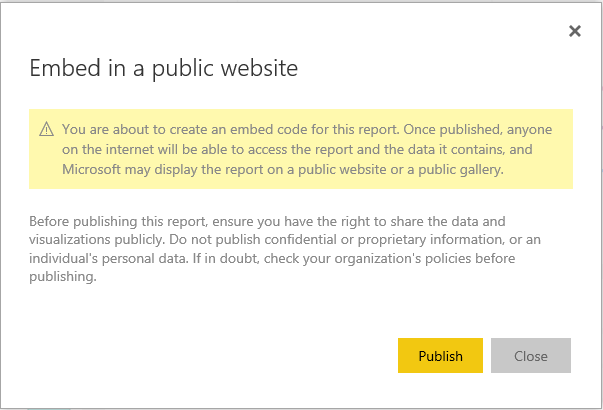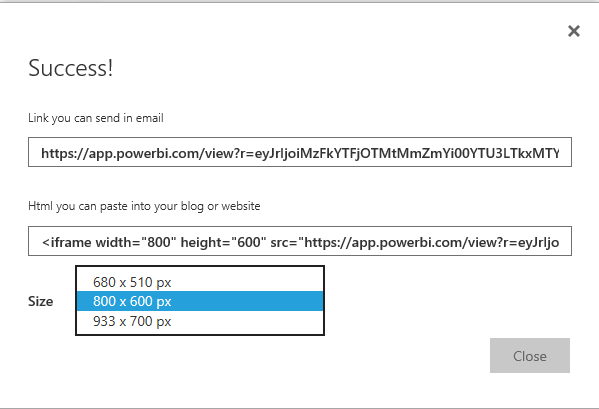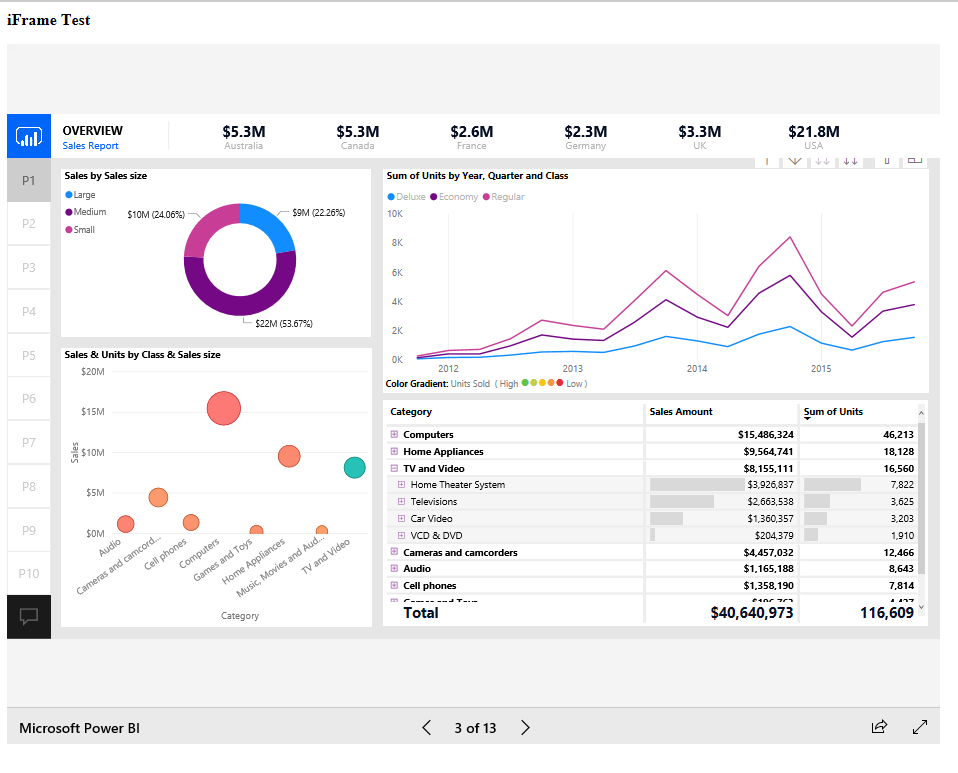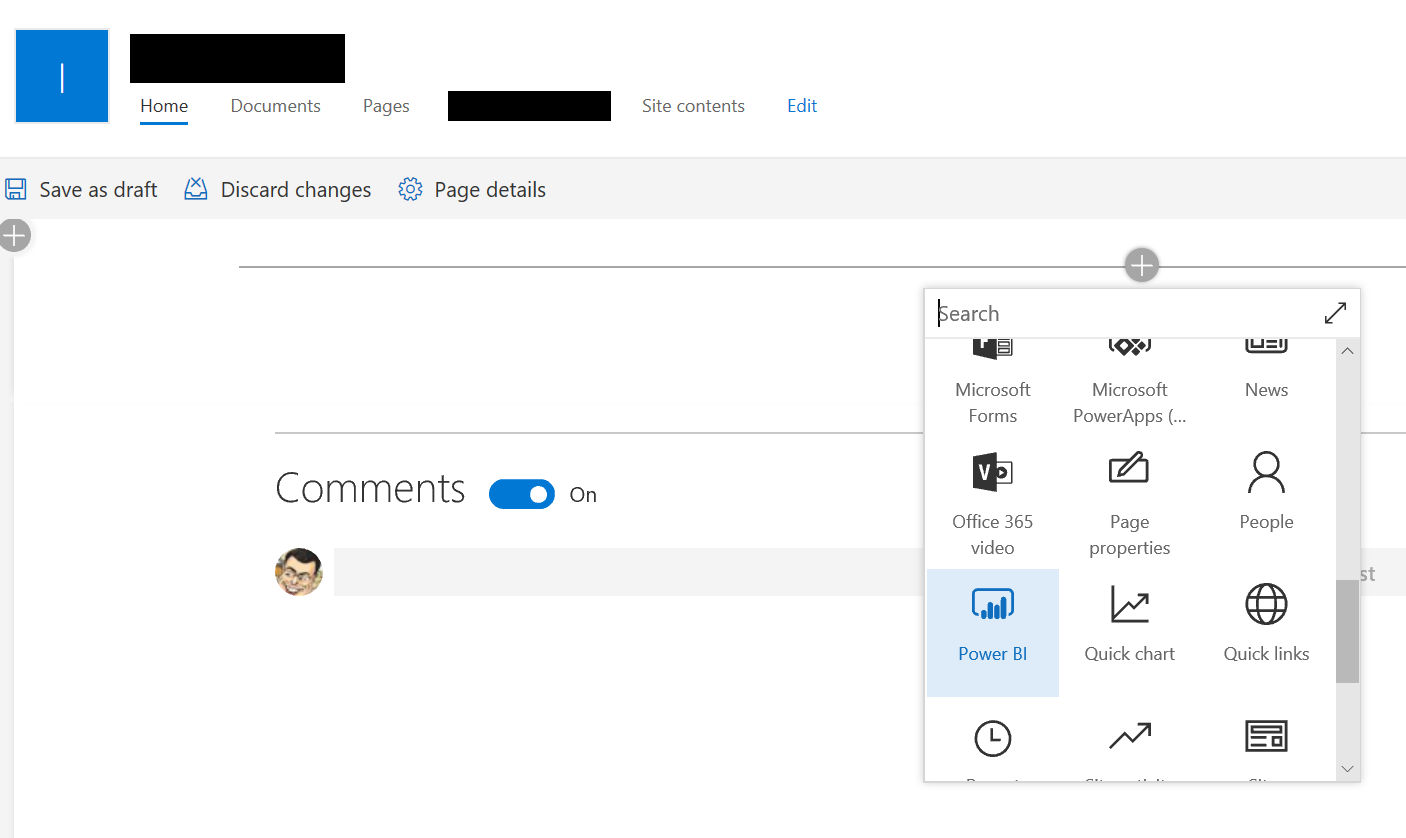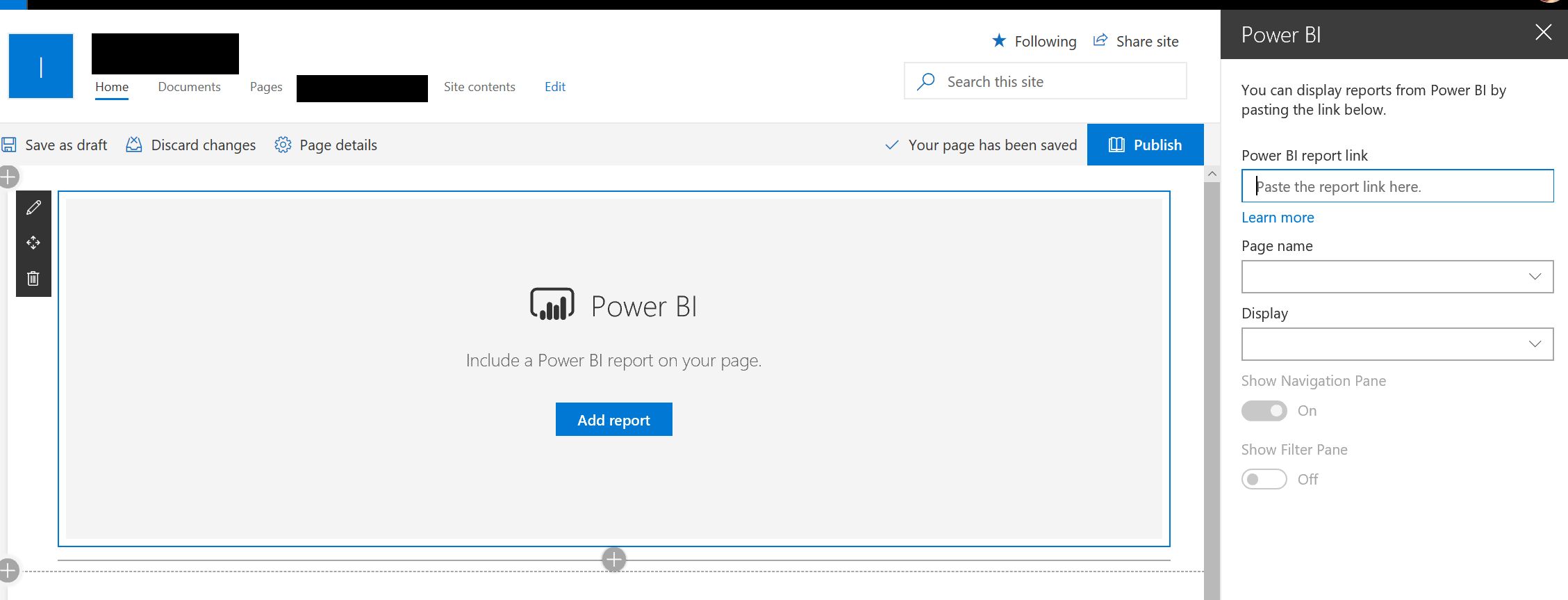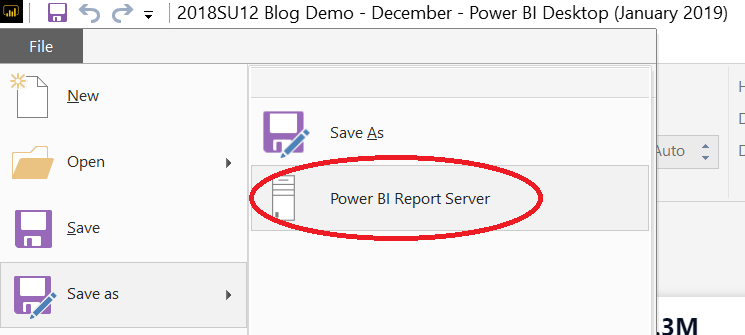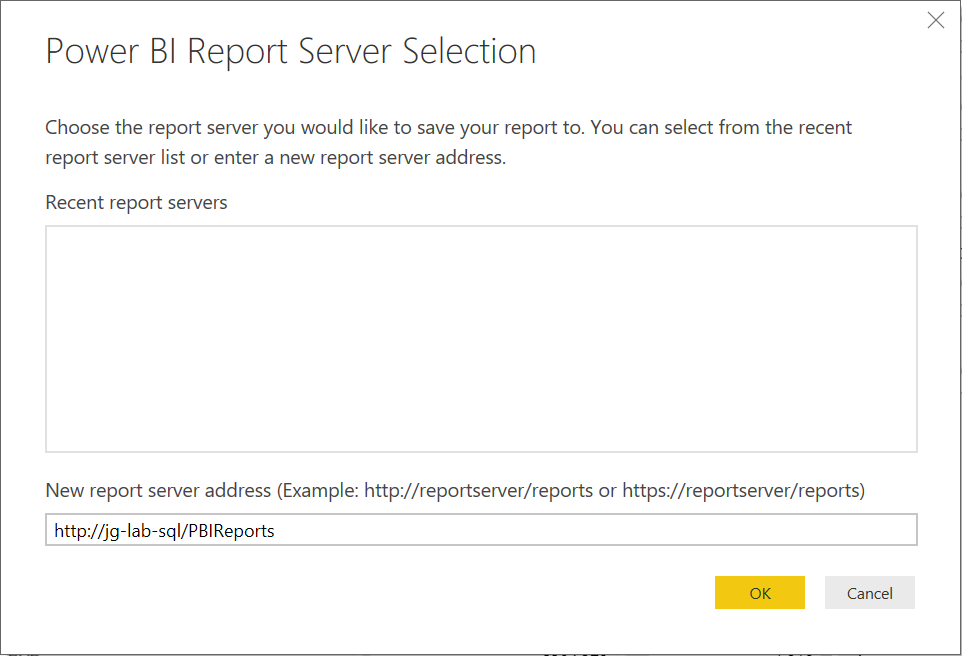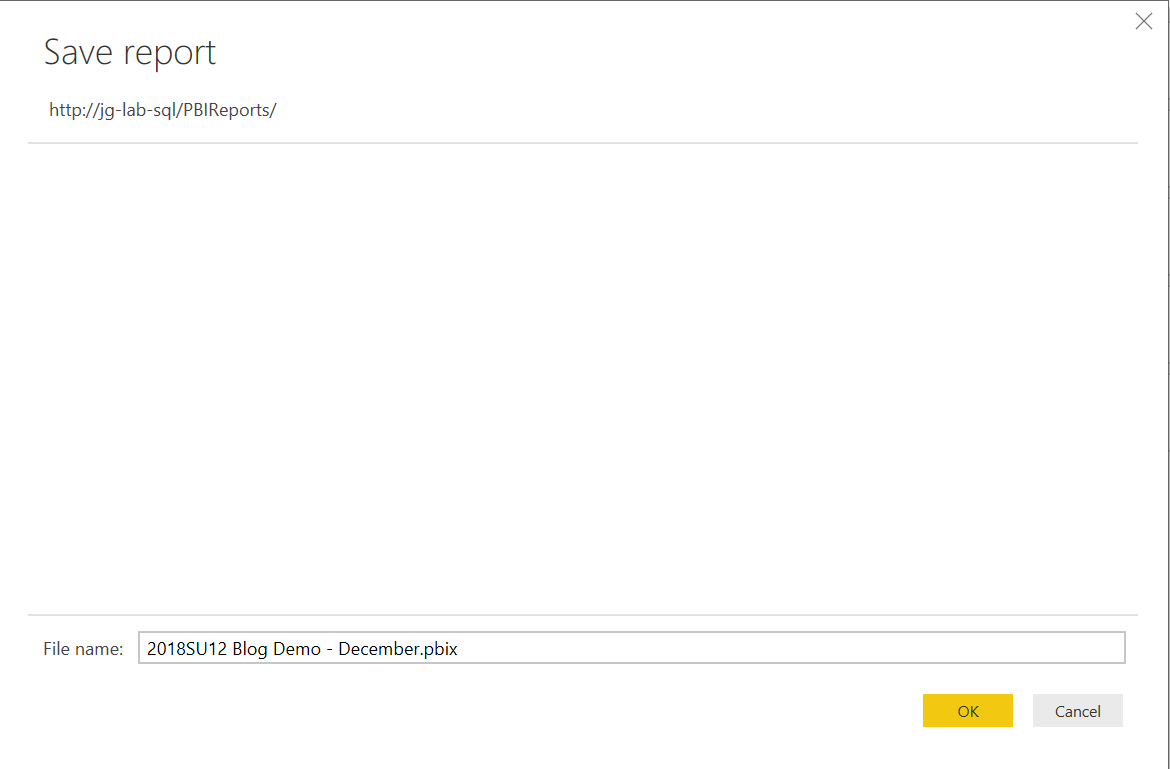Welcome to the eleventh post in my blog series concerning Microsoft Exam 70-778, where I hope to provide a revision tool for those planning to take the exam or a learning aid for those looking to increase their Power BI knowledge. In last week’s post, we covered a broad spectrum of topics ranging from Dashboards through to integrating on-premise data sources within Power BI Online. Dashboards are just one means of consuming published Power BI Reports, with a few additional options also available to help us include Power BI content within existing websites, intranet or on-premise deployments. The Publish and embed reports exam topic covers this, focusing on the following skill areas:
Publish to web; publish to Microsoft SharePoint; publish reports to a Power BI Report Server
Let’s dive into each of these specific areas of functionality and how to utilise them most effectively.
Publish to Web
The ability to publish Power BI content to any location on the web can be incredibly beneficial. Users can access Power BI information without needing to log into Power BI Online or even, necessarily, be licensed, allowing you to quickly include Reports as part of an existing website, blog or application. Although there is some trade-off from a functionality perspective, you can expect to do most of the things you’d expect a Power BI Report to do as standard. Keep in mind though; it’s only possible to publish Reports to the web, not Dashboards or Datasets. To do this, you navigate to the relevant Report within Power BI Online and select the File -> Publish to web option:
At this stage, note that you will be presented with additional dialog box prompts, indicated below, which emphasise two critical points to remember regarding the Publish to web option:
- ANYONE on the web can access your Report once published, and there is also a high likelihood that crawler bots, including search engines, will also index and include your Report as part of search results. To ensure that only users within your organisation can access your report, consider using the Embed option as opposed to Publish to Web, which is available for users assigned a Power BI Professional license.
- If you wish to embed reports for internal users to access, then this is technically not allowed under the Power BI Free license. To use this functionality in a compliant manner, you must ensure that all internal users accessing the report are assigned a Power BI Professional license.
Once sorting the various T&C’s, a URL and embed code is generated for you to use. A handy feature for less-technical users is the ability to modify the size of the IFrame, based on the options defined below:
You can then embed the IFrame snippet within any HTML page. For example, the below snippet would load a basic HTML document, with the Report fully rendered for access:
<html>
<p><b>iFrame Test</b><p>
<iframe width="933" height="700" src="https://app.powerbi.com/view?r=aBjFVit61EihycCDLLtDAlMJeVQICkMIwvEFSbgosnAFFjy4kctLkRzqVxB3xZHfsNMO4GDDbzxGSbLfycHKUSEytFTe16sULAe61SsXzPdA2hhGWiTx7YTwf4o6" frameborder="0" allowFullScreen="true"></iframe>
</html>
The rendered Report behaves as you would expect any other Power BI Report to work. You can navigate between pages, move your cursor over visualizations, drill up/down through them, view their tooltips and even apply filters. However, you are unable to see or export any underlying data or export the Report as a PowerPoint document/PDF. You also cannot Publish to web a report that:
- Has R visuals.
- Uses Row-level security.
- Has an on-premise SQL Server Analysis Services Tabular data source.
- Is shared with you.
Putting aside the paramount data privacy and licensing concerns associated with this feature, it does nevertheless present a nice way of sharing out Power BI content for external users to access.
Publish to SharePoint
Intranet sites represent a potential deployment option for Power BI content, and the Publish to SharePoint Online option helps to accommodate this. Available for Power BI Professional subscriptions and online SharePoint deployments, this feature works similar to Publish to web and can be found nestled just next to this option on the File tab:
Once selected, Power BI will then generate a URL link, as indicated below:
Your next step will then be to navigate to the SharePoint page that you wish to embed the Report onto and adding the appropriate control onto the page:
And then populate the proper details on the right-hand pane when it appears:
Note that you have a few options here to help customise how the Report renders. You can specify a default page, the page ratio and also toggle whether the Navigation or Filter panes are displayed.
An important thing to remember when working with this feature is to ensure that all SharePoint users who need to access the Report have been granted the relevant access permissions within Power BI; merely adding the Report into SharePoint will not automatically do this for you, and users will instead get an error message. The quickest way to grant these privileges is to ensure that all users are part of the Workspace/Office 365 Group where the Report resides. Alternatively, you can also specifically Share the Report out to all required users, but this could prove cumbersome to manage for larger deployments.
Publish to Power BI Report Server
Organisations that are not quite ready to start using Power BI within the cloud-based offering can still potentially benefit from all the goodness that the solution has to offer. If you have an active SQL Server Enterprise license agreement with Software Assurance or a Power BI Premium subscription, then Microsoft allows you to download a fully licensed copy of Power BI Report Server. This application is, in effect, an on-premise version of Power BI Online, provideing sufficient feature parity alongside some nice little extras thrown in. From a technical standpoint, the solution is a retooled version of SQL Server Reporting Services (SSRS); and, as a consequence, you have the full capability to deploy out SSRS reports onto Power BI Report Server. Functionality like this may represent a significant boon, allowing organisations to leverage their existing reporting solutions while enabling them to start developing new reports using Power BI as well. Microsoft also provides a Developer edition of the application, which is really neat. 🙂
Publishing a Report to Power BI Report Server has some significant differences when compared to the Online version. Because the solution does not benefit from the same release cadence as the online offering, you must use a separate Power BI Desktop application when developing for Power BI Report Server. The latest release from January 2019 (at the time of writing this) is available for download, but will not necessarily have the same monthly release cycles compared with the “normal” Power BI Desktop application. As such, be aware that you may encounter issues working with Reports developed between both Desktop applications and, the general recommendation would be to ensure these are developed separately wherever possible.
When getting a Report deployed out to Power BI Report Server, you must somewhat counter-intuitively navigate into the File -> Save as area of the application, where the appropriate option becomes visible:
Then, when prompted, populate the URL field with the Web Portal URL value (derived from the Report Server Configuration Manager application):
Next, specify the name of the folder where the Report will be saved. In the example below, there are no folders set up, so the Report will be deployed out to the default, root folder on the instance:
It may then take some time for the Report to publish out successfully…
…at which point, you can then take a look at how the Report looks within the application. As the screenshot below indicates, the experience here is virtually identical when compared to Power BI Online:
If you ever need to make changes to your Report, you would have to revert to Power BI Desktop, make the appropriate changes and then repeat the steps above. Unlike Power BI Online, there is no option to modify reports from within a web browser. A small trade-off but, as we can see, Power BI Report Server does provide a complete Power BI experience that is tailorable to an organisation’s specific infrastructure/hosting requirements.
Key Takeaways
- The Publish to web option allows for non-licensed, external users to view a Power BI Report in its entirety. A URL and IFrame embed code can be generated for this at any time within the portal and then dropped into virtually any website. Although you will lose some functionality when deploying a Report out in this manner, you can expect that users will be able to perform most types of interactions with visualizations, Report pages and other components, as if they were accessing the Report through Power BI Online. In some cases, you may be unable to use the Publish to web option if your Report uses certain kinds of features, such as R Visuals or row-level security. You must also take into account any privacy or data protection concerns, as Reports deployed out in this manner will be publically accessible; where this is an issue, the Embed option is available as a secure alternative.
- There are three steps involved if you wish to add a Report to SharePoint. First, you must generate the unique SharePoint embed URL within Power BI. Secondly, you then need to add on the dedicated control for this feature on your target SharePoint page and configure the relevant display options. Finally, you then need to ensure that all SharePoint users have been granted access to the Report, either at a Workspace level (recommended option) or by having the Report shared with them. By implication, in this scenario, all SharePoint users would have to have at least a Power BI Professional license to take full advantage of this functionality.
- Publishing a Report to Power BI Report Server is mostly the same as if you were to do the same with the online version of the product. Instead of selecting a Workspace to add the Report to you, specify the name of the Report Server folder where the Report will reside. From a development standpoint, the dedicated Power BI Desktop for Power BI Report Server must be used and may differ in functionality from the “normal” version of the tool. There is also no option to edit a report from within Power BI Report Server like you can through the online version.
We saw previously how Power BI Embedded presents a means of integrating Power BI visualizations as part of a bespoke application, but the options offered in this post today do represent a potentially quicker and simpler alternative to achieving the same ends. In this series penultimate post next week, we will dive deeper into the various security options available as part of Power BI, to help ensure that both reports - and any underlying data - can be “hardened” to suit a variety of different scenarios.

